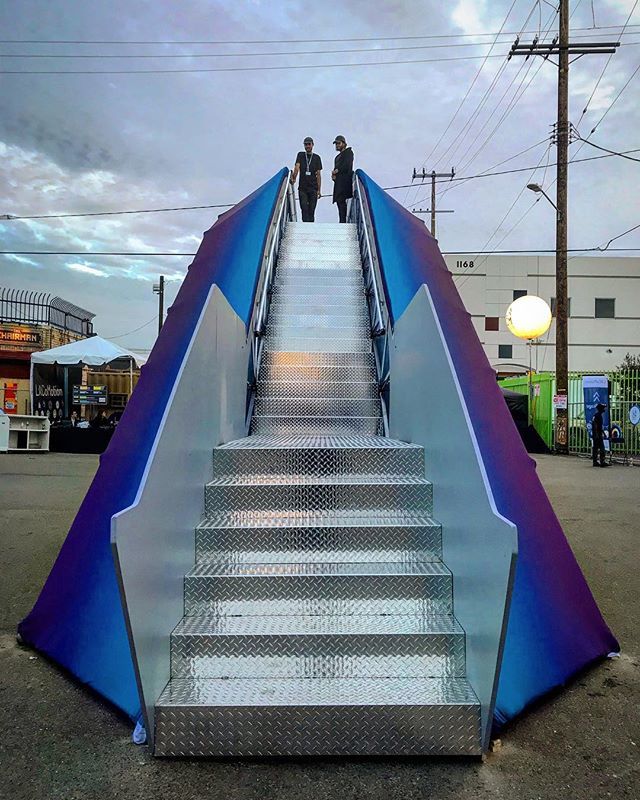Architecture in Motion: SCI-Arc Faculty Participate in LA CoMotion Panel
NewCities Foundation presented the inaugural edition of LA CoMotion, a conference, expo, and festival that took place November 15–19 in the Arts District of Downtown Los Angeles, activating the neighborhood with demos of autonomous vehicles and drones. LA CoMotion also gathered global leaders to examine emerging ecosystems and new methods of mobility and transportation, and it included a panel comprised of several SCI-Arc faculty members.
“Fireside Chat: Reimagining Urban Living” was moderated by Erik Ghenoiu, Research and Learning Assessment Coordinator, History + Theory, at SCI-Arc. Panelists included Philippe Chiambaretta, founder and director of PCA-STREAM in Paris; David Ruy, director of Ruy Klein and Postgraduate Programs Chair at SCI-Arc; and Michael Rotondi, principal of RoTo Architects and Distinguished Faculty and Honorary Trustee at SCI-Arc. Along with his students, Alexis Rochas, founder of STEREOBOT and Making + Meaning Coordinator, Design Studio, Applied Studies, at SCI-ARC, designed and fabricated the stage for LA CoMotion.

“What it is that architects do in relationship to urban change?” asked Ghenoiu of the panelists. “At SCI-Arc, we often think about architecture as a platform for imagining new worlds—alternate realities and possibilities.”
Chiambaretta observed that “more people want to live in cities now, and it’s an incredible challenge for us as designers. We have to move from the top-down approach that was modern, like Mies van der Rohe and Le Corbusier, to a much more collective intelligence role and approach in architecture—more of a curator or an art director in a movie.”
“We’ve largely lost faith in the role of imagination and vision,” Ruy said. “We’re more interested in knowledge, tools, and instruments. As I tell my students, everything might look normal to you now, but if you put Thomas Jefferson in a time machine and brought him to today, he’d probably have a heart attack.”

Rotondi responded that cities are beginning to operate like a brain, making connections at high speeds and looking for fluencies. “If speed is what we’re after—effectiveness and efficiencies— then the geometries of cities have to be based on that and not the grid that Jefferson proposed, which facilitates ownership.” He advocates for data sharing between developing cities: “In order to have a smart city, you need data,” noting that “When you’re young, you’re interested in form and the content fits. When you get older, you start with content, and then form comes out of it.”
SCI-Arc is currently talking with Tesla about research opportunities. “The first thing I asked them is ‘Why do you have to continue to think of it as a car? Why not think of it as a moving piece of architecture?’” Ruy said, arguing that commuting should become an extension of our lifestyle. But he recognizes that architecture can’t solve every problem; unlike many developing global cities, American cities already have infrastructure that must be reformatted. Ruy believes that we should give up on searching for universal models and look at more unique models: “One thing we’ve learned from modernism is that there is no universal model, and if we try to apply one, it’s a disaster.”
Image 1: STEREOBOT mobile infrastructure, 85-foot span popup bridge and gateway to LA Comotion
Image 2: STEREOBOT + SCIARC workshop, LA Comotion main stage design and fabrication